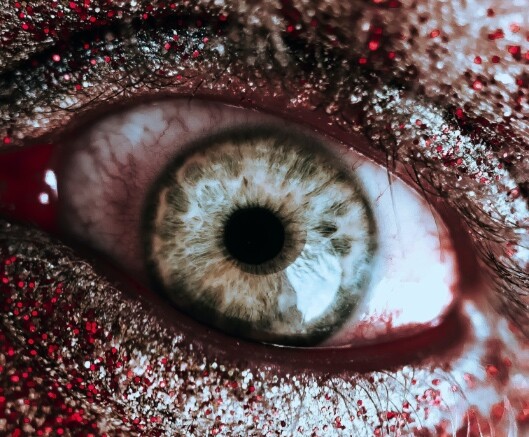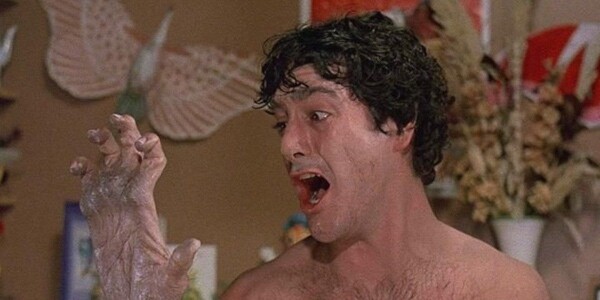Despite its miraculous properties, the human body is an incredibly fragile vehicle for existence. The outdoor elements, other humans, animals, illness, an uneven sidewalk, and so on – there are many potentially dangerous factors to consider in our walk through life. And though all bodies are different, they share in the common pain of bruising, breaking, and bleeding – the results of which also elicit a sense of betrayal. Enter Body Horror.
This fragility and commonality are what make the body horror genre so effective. The books and movies may be filled with far-fetched concepts, but the trauma inflicted on the bodies within hits closer to home. Most of us haven’t experienced the torturous mutilation presented in Audition (1999), but many have experienced the sting of papercuts, accidental lacerations, and so on, all the way up to self-inflicted cutting and physical abuse. Likewise, many of us don’t have to worry about flesh-eating bacteria destroying us from the inside out (as seen in 2002’s Cabin Fever), but we know of the affliction of disease, deformity, decay, and yes, even flesh-eating bacteria for some.

In this article I will attempt to briefly trace the history, characteristics, and notable creators/examples of the body horror genre. So enjoy the read, cringing and grimacing through the fingers half covering your eyes. This genre is not for the squeamish.
[Side note: as in all horror genres, there is overlap between body horror and other spaces – in this case areas like eco horror, slashers, surrealist horror, psychological horror, cosmic horror, and more]
What is Body Horror?
In its most basic definition, body horror is horror and trauma that is visited specifically on the human body.
Nailed it.
Need more? Examples of these bodily violations usually include some form of dismembering, destruction, distortion, transformation, mutilation, infection, and so on. These acts are typically graphic in nature and meant to elicit powerful reactions from viewers and readers, though there are instances where the horror is quieter (and still somehow just as effective). Monstrous mutations, debilitating diseases, invasive aliens, alarming technology, and anatomical abuse are all par for the course when it comes to body horror.
So body horror is visceral, but it’s also emotional. The fear of aging and our body decaying, of losing a limb or an organ, and of breaking down due to some invasive disease are all very haunting prospects. It’s a deeper level of fear because it involves some sort of degeneration and devastating change to who we are and how we identify. Horror is also ripe for works that deal with social or political themes and metaphors, and the body horror genre is certainly no exception.

Ostensibly, body horror has existed in some form or fashion for as long as humans have had bodies. The term itself appears to have originated in Phillip Brophy’s 1983 article “Horrality: The Textuality of the Contemporary Horror Film” – in which he cites specific examples like the marble slab scene from Deep Red (1976), the chestburster scene from Alien (1979), the numerous transformations in An American Werewolf in London (1981), and the shape-shifting, replicating horror of The Thing (1982). But the genre has roots that stretch back further than the 70s and 80s, reaching back into the Gothic tradition and even Mary Shelley’s seminal novel Frankenstein (also a landmark for kick-starting the sci-fi horror genre).
But since this is supposed to be a brief look, we’re going to skip a large chunk of time and land closer to home. The modern era of body horror began in the 1950s, so we’re going to start there and move forward, looking at prominent examples in film and literature.
Body Horror Films
Our current conception of body horror got its start back in the 50s with films like The Blob (1958) and The Fly (1958), and then skyrocketed from there. The 1960s saw films like Rosemary’s Baby (1968), and the 1970s had movies like Erasehead (1977) and the remake of Invasions of the Body Snatchers (1978).
Then came the 80s, which was truly a golden age for body horror. That decade produced some of the best films from giants in the field like David Cronenberg (Scanners and Videodrome), John Carpenter (The Thing), Stuart Gordon (The Re-Animator and From Beyond), Brian Yuznu (Society), and Clive Barker (Hellraiser). The 1980s also saw a rise in Asian body horror with such offerings as Akira (1988) and Tetsuo: The Iron Man (1989). Both involve humans melding with machines in increasingly gruesome and disturbing ways.



It’s impossible to talk about this genre without going into more detail on the works of visionary director David Cronenberg. The most famous example is probably his version of The Fly (1986), where a misfortuned man has his cellular structure fused to that of a housefly. The transformation is a painful one, as he slowly becomes more insect than human, and it’s made even more so by the loved ones who have to bear witness. If you’re wanting more concrete examples of body horror, look no further than the genetically engineered parasites of Shivers (1975), the experimental surgery gone wrong of Rabid (1977), or the tech-inserted-in-body-orifices of eXistenZ (1999).
Though the 1980s were spectacular, the next several decades each had their own highlights in the genre. Woven into the 2000s was a surge of “torture porn” films like Saw (2004) and The Human Centipede (2009), but also other – and arguably better – examples of body horror like Slither (2006) and Teeth (2007). Some particularly good flicks from the 2010s include American Mary (2012), Under the Skin (2013), Tusk (2014), The Void (2016), and The Beach House (2019). And if Brandon Cronenberg’s Possessor is any indication, then the 2020s have exciting things in store for the genre!
Body Horror in Other Mediums
There is no lack of examples for body horror in other mediums as well, such as literature, comics, TV, and video games.

When it comes to literature, someone like Clive Barker is an easy pick. Beyond just The Hellbound Heart (1986), body horror also shows up in a lot of his short stories, such as “In the Hills, the Cities” or “Jacqueline Ess: Her Will and Testament”. Other literary giants sure to have dipped their toes into the genre are Edgar Allen Poe, Stephen King, Richard Mattheson, and Robert Bloch. But there are plenty of other fantastic authors with titles to make you feel queasy, from Nick Cutter (The Troop), Jeremy Robert Johnson (Skullcrack City), and Kathe Koja (The Cipher) all the way over to the extreme horror side with authors like Edward Lee, Wrath James White, Ryan Harding, and Jack Ketchum. A personal favorite is Scott Smith’s 2008 novel The Ruins, in which a group of vacationers are graphically tortured and invaded by a sentient plant.
And just to give you more examples, here’s a woefully inexhaustive list from a number of indie/small press releases: Greg Sisco’s In Nightmares We’re Alone (2015), Jonathan Winn’s Eidolon Avenue (2016), Gwendolyn Kiste’s The Rust Maidens (2018), Eric LaRocca’s Starving Ghosts in Every Thread (2020) and his later work Things Have Gotten Worse Since We Last Spoke (2021), Scott Cole’s Crazytimes (2020), Hailey Piper’s Unfortunate Elements of My Anatomy (2021), and Eve Harm’s Transmuted (2021).



When I think of body horror in comics my mind immediately goes to writer Zac Thompson, known for such excellent offerings as 2019’s Come Into Me (co-written with Lonnie Nadler), Lonely Receiver (2021), and I Breathed a Body (2021). Other exemplary choices would be Charles Burns’s Black Hole (1995), Justin Jordan’s Spread series (2015-2018), numerous instances in the current run of The Immortal Hulk (2018-present), Jeff Lemire’s run of Animal Man (2019), Emily Carroll’s When I Arrived at the Castle (2019), Carmen Maria Machado’s The Low, Low Woods (2020), and basically any iteration of Swamp Thing.
Anime has an extensive output of body horror, with examples like Parasyte, Ghost in the Shell, Attack on Titan, and Dorohedoro. In the world of manga, writer and artist Junji Ito dominates the scene. Best known for his spiral-obsessed anthology Uzumaki (1988-89), Ito’s work is shockingly gruesome in it’s originality and creativity, and it ranges from the quietly unsettling to the outright grotesque. But other manga’s definitely worth checking out include Kentaro Miura’s Berserk and anything by Kazuo Umezu, as well as the manga versions of previously mentioned titles like Attack on Titan and Parasyte.

For video games, the series Dead Space is the first property that comes to mind, where all kinds of nightmarish mutations and body horror oddities await engineer Isaac Claarke in outer space. Other contenders would include various entries in the Resident Evil series, the Parasite Eve series, aspects of the BioShock series, and several of the games from Frictional Studios like Amnesia and Soma.
What’s Next?
The beauty and tragedy of mankind is that we will continue to live out our existence in these meat suits we call bodies, at least until the zombie apocalypse or the robot uprising. These bodies will continue to hurt, age, decay, and generally betray us in surprising ways. Diseases and infections will continue to appear and attack our vital systems (too soon?). Scientists and extremists alike will continue to search for new ways to improve the body, thereby altering and transmuting it into something unlike its natural state. What this morbid but factually correct information means then is that there will always be a place for the visceral and emotional fears of body horror in the popular consciousness.

Ben’s love for horror began at a young age when he devoured books like the Goosebumps series and the various scary stories of Alvin Schwartz. Growing up he spent an unholy amount of time binge watching horror films and staying up till the early hours of the morning playing games like Resident Evil and Silent Hill. Since then his love for the genre has only increased, expanding to include all manner of subgenres and mediums. He firmly believes in the power of horror to create an imaginative space for exploring our connection to each other and the universe, but he also appreciates the pure entertainment of B movies and splatterpunk fiction.
Nowadays you can find Ben hustling his skills as a freelance writer and editor. When he’s not building his portfolio or spending time with his wife and two kids, he’s immersing himself in his reading and writing. Though he loves horror in all forms, he has a particular penchant for indie authors and publishers. He is a proud supporter of the horror community and spends much of his free time reviewing and promoting the books/comics you need to be reading right now!
